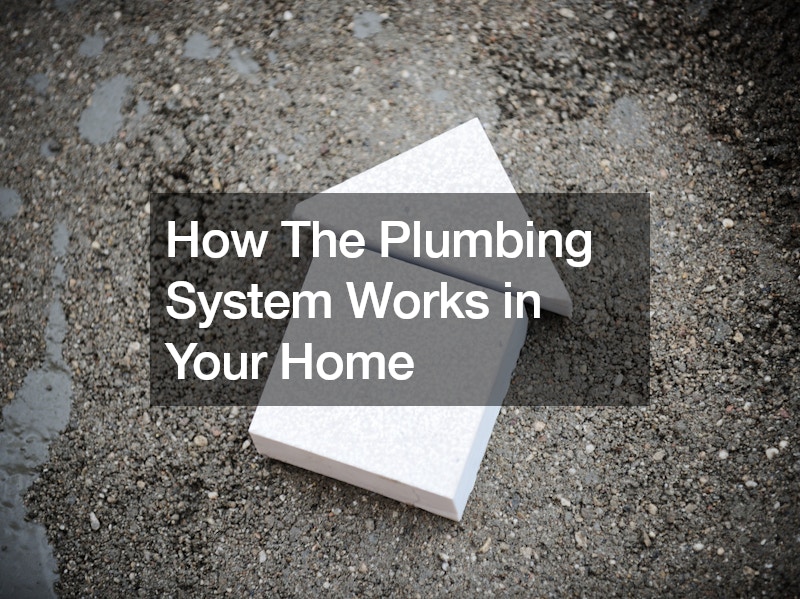

Plumbing is an essential component of modern homes, providing the infrastructure for delivering clean water and disposing of waste. Understanding how the plumbing system works is crucial for homeowners to maintain its efficiency and address any issues that may arise. In this comprehensive guide, we’ll explore the intricacies of the plumbing system in your home, from waste drains to potable water supply and rainwater management.
Overview of Plumbing System Components
A typical home’s plumbing system consists of several interconnected components, each serving a specific function:
1. Waste Drains: Waste drains are integral to removing wastewater from various fixtures in your home, including toilets, sinks, bathtubs, and showers. Waste is carried through drain pipes, which slope slightly to facilitate smooth flow, ultimately reaching either municipal drains or septic tanks.
2. Waste Vents: Waste vents play a crucial role in maintaining proper pressure and airflow within the plumbing system. These vents prevent issues like gurgling and sewer gas infiltration by equalizing pressure and allowing air to enter the system. They typically extend through the roof and require regular maintenance to ensure clear airflow.
3. Potable Water Supply: Potable water supply brings clean, drinkable water into your home from municipal services or wells. This water is pressurized and distributed through pipes to various fixtures, such as sinks, showers, and appliances like washing machines and dishwashers.
4. Rainwater Management: Rainwater management involves systems designed to handle rainwater runoff from your roof, preventing water infiltration and potential damage to your home’s foundation. This includes gutters, downspouts, and rainwater collection methods, which can help conserve water for non-potable uses like watering plants.
Functioning of the Plumbing System
Understanding how these components work together is essential for grasping the functionality of your home’s plumbing system. When you use a fixture like a sink or toilet, wastewater flows through drain pipes, guided by gravity and the slope of the pipes. Waste is carried away to either municipal sewers or a septic tank, depending on your home’s setup.
Proper venting ensures that air can enter the system, preventing suction and maintaining optimal pressure levels. This prevents issues like p-trap siphoning and sewer gas odors from entering your home. Regular maintenance, including pipeline cleaning and clearing of debris from vents, is crucial for ensuring the system’s smooth operation.
Potable water is delivered to your home through a pressurized system, typically originating from the street. Shut-off valves provide a means to isolate the water supply in case of emergencies or maintenance needs. Water heaters, whether gas or electric, heat cold water before distributing it throughout your home for various uses.
Rainwater management systems, including gutters and downspouts, divert rainwater away from your home’s foundation to prevent water damage. Some homeowners opt to collect rainwater for non-potable uses, such as watering gardens or flushing toilets, contributing to water conservation efforts.
Maintenance and Care
To ensure the longevity and efficiency of your home’s plumbing system, regular maintenance is essential. This includes:
1. Pipeline Cleaning: Regular pipeline cleaning helps prevent clogs and blockages, ensuring smooth wastewater flow and reducing the risk of backups and overflows.
2. Clearing of Vents: Regular inspection and clearing of waste vents prevent air blockages and ensure proper venting, reducing the risk of sewer gas odors and drainage issues.
3. Leak Detection: Periodic checks for leaks in pipes, fixtures, and connections can help prevent water wastage and potential damage to your home’s structure.
4. Drain Maintenance: Avoiding the disposal of grease, oils, and non-biodegradable materials down drains can prevent buildup and clogs, maintaining optimal drain function.
5. Rainwater System Maintenance: Keeping gutters and downspouts clear of debris ensures effective rainwater management and prevents water infiltration into your home.
Common Plumbing Issues
Common plumbing issues can disrupt daily life and lead to costly repairs if left unattended. One prevalent issue is leaky faucets or pipes, which can waste significant amounts of water and drive up utility bills. To address this, homeowners can replace worn-out washers or seals in faucets or tighten loose pipe connections.
1. Clogged drains are another common problem, often caused by a buildup of hair, grease, or other debris. Using a plunger or plumbing snake can help clear minor clogs, while chemical drain cleaners or homemade solutions like baking soda and vinegar can dissolve stubborn blockages.
2. Running toilets are a frequent annoyance, often caused by a faulty flapper valve or fill valve. Adjusting or replacing these components can resolve the issue and prevent water waste.
3. Low water pressure can indicate various issues, such as mineral buildup in pipes or a faulty pressure regulator. Flushing sediment from pipes or replacing a malfunctioning pressure regulator can restore proper water flow.
Conclusion
Understanding how the plumbing system works in your home empowers you to take proactive measures to maintain its efficiency and address any issues that may arise. By familiarizing yourself with the components and functioning of your home’s plumbing system, you can ensure a reliable supply of clean water and efficient wastewater disposal for years to come.
Remember to prioritize regular maintenance, including pipeline cleaning and clearing of vents, to prevent costly repairs and ensure the longevity of your plumbing infrastructure.
.


